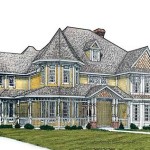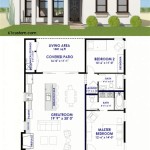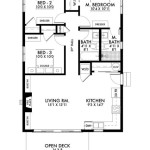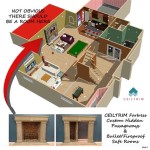Plans To Build A Tiny House: Comprehensive Guidelines for Indianapolis
The growing popularity of tiny house living has sparked significant interest in Indianapolis and across the United States. This lifestyle choice often appeals to those seeking financial freedom, environmental sustainability, or a simplified way of life. Before embarking on the construction of a tiny house in Indianapolis, careful planning and adherence to local regulations are crucial. This article provides comprehensive guidelines to assist individuals in navigating the process, from initial design considerations to compliance with building codes.
The initial step in building a tiny house involves defining the needs and preferences of the occupants. This includes considering the number of individuals who will reside in the space, their lifestyle, and any specific requirements they may have. A detailed needs assessment will inform the design process and ensure that the final structure meets the occupants' expectations.
One crucial aspect of building a tiny house, particularly in Indianapolis, is understanding the difference between a tiny house on wheels (THOW) and a tiny house on a foundation. THOWs are generally considered recreational vehicles (RVs) and are subject to different regulations than traditional homes. Tiny houses on foundations, however, must adhere to local building codes and zoning regulations applicable to permanent dwellings.
Prior to commencing any construction, thorough research into Indianapolis's local ordinances and building codes is paramount. Contacting the Department of Metropolitan Development is advisable to gain clarity on zoning regulations, permitting requirements, and any specific restrictions that may apply to tiny houses. This proactive approach can help avoid potential legal issues and ensure compliance throughout the construction process.
Key Point 1: Understanding Indianapolis Zoning and Building Codes
Indianapolis zoning ordinances dictate land use and development regulations within the city. These ordinances specify the types of structures permitted in different zones, minimum lot sizes, setback requirements, and other limitations on building construction. Building codes, on the other hand, establish the minimum standards for the structural integrity, safety, and energy efficiency of buildings.
Tiny houses on foundations must typically comply with the International Residential Code (IRC) with any local amendments adopted by Indianapolis. This code covers various aspects of residential construction, including foundation requirements, framing, electrical systems, plumbing, and mechanical systems. It is essential to familiarize oneself with the specific requirements of the IRC and any local amendments to ensure compliance.
THOWs, while generally considered RVs, may still be subject to certain regulations regarding parking and occupancy. Indianapolis may have restrictions on where RVs can be parked and for how long. Furthermore, long-term occupancy of a THOW in certain residential zones may be prohibited. Thorough research into these regulations is critical before deciding on the location for a THOW.
Failure to comply with zoning ordinances and building codes can result in fines, stop-work orders, or even the demolition of the structure. Obtaining the necessary permits prior to construction is mandatory. The permitting process typically involves submitting detailed plans and specifications to the Department of Metropolitan Development for review. Inspections are conducted throughout the construction process to ensure compliance with the approved plans and applicable codes.
Navigating the complex web of regulations can be challenging. It is often beneficial to consult with a local architect, engineer, or building contractor who is familiar with Indianapolis’s zoning ordinances and building codes. These professionals can provide expert guidance and assistance in ensuring compliance.
Key Point 2: Designing for Functionality and Efficiency
Designing a tiny house requires careful consideration of space utilization and functionality. Given the limited square footage, every inch of space must be thoughtfully planned to maximize its potential. Multifunctional furniture, such as a sofa bed or a dining table that can be converted into a desk, is essential for optimizing space.
Storage solutions are also crucial in a tiny house. Built-in shelving, cabinets, and drawers can provide ample storage space without sacrificing valuable floor area. Vertical storage, such as utilizing the space above cabinets or installing shelves near the ceiling, can further enhance storage capacity.
Efficient use of natural light is important for creating a bright and airy atmosphere in a tiny house. Large windows and skylights can maximize natural light penetration, reducing the need for artificial lighting. Proper ventilation is also essential for maintaining air quality and preventing moisture buildup.
Energy efficiency is another key consideration in tiny house design. Utilizing energy-efficient appliances, such as a compact refrigerator and a tankless water heater, can significantly reduce energy consumption. Proper insulation is also crucial for minimizing heat loss in the winter and heat gain in the summer. Consider using environmentally friendly insulation materials such as recycled denim or cellulose.
The layout of the tiny house should be carefully planned to ensure smooth traffic flow and easy access to all areas. The kitchen, bathroom, and sleeping areas should be strategically located to optimize comfort and convenience. Consider the placement of doors and windows to maximize natural light and ventilation while minimizing drafts.
Accessibility is another important factor to consider, especially for individuals with mobility limitations. Incorporating features such as wider doorways, grab bars in the bathroom, and a ramp or lift can make the tiny house more accessible and user-friendly.
Key Point 3: Construction and Materials
The construction of a tiny house can be approached in several ways, depending on the individual's skills, budget, and time constraints. Some individuals choose to build the tiny house themselves, while others hire a contractor to handle the construction. A combination of both approaches is also possible, with the individual handling some aspects of the construction and hiring professionals for specialized tasks such as electrical or plumbing work.
Selecting appropriate materials is crucial for ensuring the durability, safety, and energy efficiency of the tiny house. Lightweight materials such as engineered lumber, metal framing, and composite siding can reduce the overall weight of the structure, which is particularly important for THOWs. Durable and weather-resistant materials are essential for withstanding the elements and ensuring the longevity of the tiny house.
Proper insulation is critical for maintaining a comfortable indoor environment and reducing energy consumption. Consider using a high-quality insulation material with a high R-value to minimize heat loss in the winter and heat gain in the summer. Ensure that the insulation is properly installed to prevent air leaks and thermal bridging.
The electrical and plumbing systems must be installed by qualified professionals to ensure compliance with building codes and safety standards. A licensed electrician should handle all electrical wiring, connections, and installations. A licensed plumber should handle all plumbing work, including water supply lines, drain lines, and fixtures.
The foundation of a tiny house on a foundation must be designed and constructed according to local building codes. The foundation should be strong and stable enough to support the weight of the structure and withstand the effects of frost heave and soil settlement. A concrete slab or pier and beam foundation are common options for tiny houses.
For THOWs, the trailer must be properly sized and rated to support the weight of the structure. The trailer should be built to meet or exceed the requirements of the National Highway Traffic Safety Administration (NHTSA). Ensure that the trailer has proper lighting, brakes, and safety features.
Throughout the construction process, it is important to maintain a clean and organized work site. Dispose of waste materials properly and take precautions to prevent accidents and injuries. Follow all safety guidelines and regulations to ensure a safe and successful construction project.
Finally, sourcing materials locally can reduce transportation costs, support the local economy, and potentially reduce the environmental impact of the construction project. Consider using reclaimed or recycled materials whenever possible to further reduce the environmental footprint.
Building a tiny house in Indianapolis requires careful planning, thorough research, and adherence to local regulations. By understanding the zoning ordinances, building codes, design considerations, and construction techniques, individuals can successfully create a sustainable, functional, and affordable living space.

A Complete Guide To 10 X 16 Tiny Homes The Life

12 X Tiny Home Designs Floorplans Costs And More The Life

12 X 20 Tiny Home Designs Floorplans Costs And More The Life

10 X 20 Tiny Home Designs Floorplans Costs And Inspiration The Life

10 X Tiny Home Designs Floorplans Costs And More The Life

12 X 24 Tiny Home Designs Floorplans Costs And More The Life

14 X 40 Tiny Home Designs Floorplans Costs And More The Life

Tiny Home Regulations In Florida The Complete Guide

Tiny House Marketplace Houses For And

Tiny Home Regulations In California The Complete Guide Zook Cabins
Related Posts








